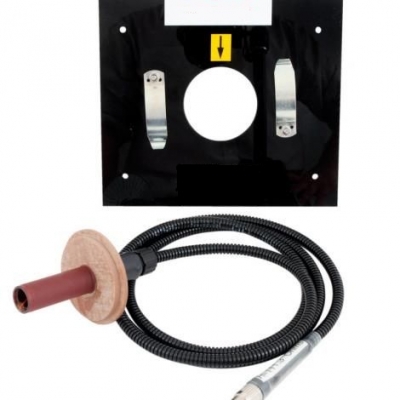- Workshop Tools and Workshop Machines India: buy@naugra.com

Local Heat Transfer Element .
Local Heat Transfer Element for Science Lab Equipment Laboratory Instruments Manufacturers, Engineering Lab Equipments Manufacturers
The Local Heat Transfer Element includes a black plastic plate with circular access hole designed to fit the aperture in the Cross Flow Heat Exchanger duct. The active element has a circular graduated flange that fits in the access hole and allows the active element to be rotated about its central axis while in the airstream. The active element consists of a non-metallic circular cylinder coated with an electrically conductive surface and circumferential contacts at each end. Under the conducting surface is a thermocouple designed to measure the local temperature.
Experimental Capabilities of Local Heat Transfer Element:
Investigation of polar heat transfer coefficient for a single tube in a transversely flowing airstream at speeds of up to 30m/s.
Determination of the local heat transfer coefficient at the stagnation point on a cylinder in crossflow
Specification of Local Heat Transfer Element:
The active element has a circular graduated flange that fits in the access hole and allows the active element to be rotated about its central axis while in the airstream.
The active element consists of a non-metallic circular cylinder coated with an electrically conductive surface and circumferential contacts at each end. Under the conducting surface is a thermocouple designed to measure the local temperature.
The cylindrical active element plugs directly into the Cross Flow Heat Exchanger Local Heat Transfer Element instrumentation console and this allows measurement of the low voltage power supplied to the heater and the surface temperature.
By passing an electrical current through the conducting surface heat is generated that is carried away by convection until a stable temperature condition is established.
Measurement of the power, the surface temperature and the air stream temperature the convective heat transfer coefficient local to the thermocouple may be calculated.
As the cylinder is non-metallic a variation in surface temperature is established that represents the variation in local heat transfer coefficient. By rotating the cylinder in angular steps results of the type shown may be recorded
